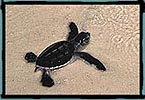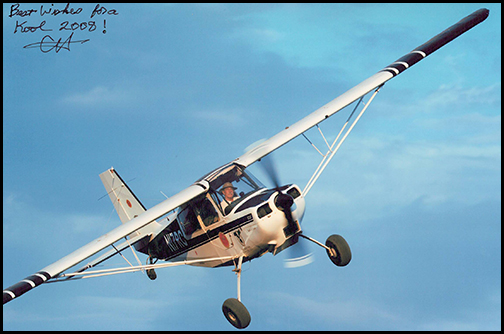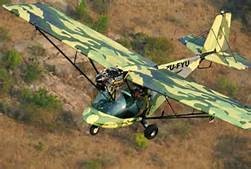
WILDERNESS CONSERVANCY > newsletter
REPORT TO DONORS (2017)

October 3, 2017
Wilderness Conservancy and its Project CARE have survived by doing what most Americans do - not spending more than comes in. It is a small foundation with a small budget. Your donations go 100% to our projects and are vital in sustaining them. Without your support Wilderness Conservancy could not succeed. Your donations are not wasted and do not go to salaries, administration or expense accounts. Wilderness Conservancy has no paid employees and all who help, donate their time, skill and expenses – including me.
THE WANTON KILLING OF RHINO AND ELEPHANTS:
Over the past several years the killing of rhino and elephant in Africa has grown substantially as a result of the demand for rhino horn and elephant ivory in, primarily, China. Rhino have been wiped out in Mozambique and elephants are being killed on a daily basis. Hundreds of rhino were killed in 2014 in South Africa alone. Wilderness Conservancy has mounted a campaign to help fund the foundation Dr. Ian Player founded several years ago called the Magqubu Ntombela Foundation to provide fuel for the helicopters and fixed wing aircraft that fly daily antipoaching missions in the game reserves of KwaZulu/Natal. These are privately owned helicopters and fixed wing aircraft being donated in this major effort. Aviation fuel cost over US$10.00 per gallon in South Africa and constitutes a major part of the antipoaching expense.
NOTE: Some of the following is an update of material contained in my report to donors of 2016.
ELEPHANT FAMILY: Our donors can be very proud of their funding of the purchase of the family of nine elephants in 1996 from the National Parks Board of South Africa. They were due to be shot in order to reduce the then burgeoning elephant population in Kruger National Park. They now flourish in Shamwari Game Reserve and have multiplied to more than 30.
NAMIBIA: The 1978 Scout aircraft is in Namibia and is operated by Carl Hilker in support of the Cheetah Conservation Fund of Laurie Marker – featured in the December 1999 issue of National Geographic magazine. Sadly, Carl died last year but his family left the Scout to Wilderness Conservancy. The aircraft has now undergone an engine overhaul and is ready for a return to service. Wilderness Conservancy has donated the Scout to the Ongava Game Reserve located in the north of Namibia adjacent to Etosha National Park (the largest reserve in Namibia). Ongava is home for nearly 1,000 rhino, hundreds of elephants and many other species of African wildlife and is, along with Etosha, the prime target for poachers bent on killing rhino and elephants. Ongava has dedicated the Scout to antipoaching operations both in Ongava and Etosha.

Carl Hilker seen here, flew and maintained the Scout in conservation operations in Namibia where he also supported the Cheetah Conservation Fund headed by Dr.Laurie Marker featured in the December 1999 issue of National Geographic magazine).
MOZAMBIQUE PROJECTS 1 and 2:
Project 1. Catapu near the Zambezi: As reported in the “REPORT TO DONORS - 2012”, “TCT Industrias Florestais, Lda - Mobilias Dalmann is a large timber company headquartered in Beira. It harvests various species of Mozambique timber and replaces each tree harvested with at least 12 young trees. TCT was created at the end of the Rhodesian war and it commenced its timber projects at Catapu near the Zambezi River in a very remote region. During the Rhodesian war the terrorists who were battling the Rhodesian security forces were mainly based in camps in Mozambique. They nearly wiped out indigenous wildlife. Early on TCT attempted to protect the remaining wildlife but it was nearly impossible given the political reality in Mozambique at the time. However, as the political and timber concession began to improve, efforts were made by TCT to expand its protection of wildlife. In the region nearly void of wildlife, which had been abundant in the 1960s, there were no wildlife conservation organizations willing to help restore the fauna. Dr. Cleaves had visited the area several times in the 1980s, 1990s and early in 2000s and was acquainted with the President of TCT, James White. In early 2012 Mr. White made a proposal to Wilderness Conservancy: in years gone by herds of Cape Buffalo roamed the area but due to the lack of water they seasonally migrated into areas where they were heavily hunted. If Wilderness Conservancy would fund the drilling of two boreholes, water would be abundant year-round and the Cape Buffalo might well remain in the Catapu area under the protection of TCT and its small group of game rangers.” Wilderness Conservancy agreed and the two bore holes were drilled and did, indeed, produce the water projected and more. In turn the Cape Buffalo have returned and have stayed in the protected area, as have many other species of wildlife. Wilderness Conservancy has also provided uniforms and other essentials for the game rangers and many poachers have been arrested and prosecuted.”
Since the above report Dr. Cleaves visited Catapu and found that the two boreholes had, indeed, produced far more water than expected, that two large pans had been filled with year around water, and that wildlife and vegetation had returned. In addition, Cape Hunting Dogs have also returned as well as leopard and numerous other species not having been seen for many years. Dr. Cleaves also delivered a Panorama 150 motion activated infra-red camera to be mounted on various poacher incursion trails. That camera, on the first night of placement, photographed two poachers and registered the date, time and GPS location. James White presented the photo to the local village chief and he identified the two men and they were arrested and prosecuted.
The small contingent of 14 game guards employed by TCT were equipped with military type uniforms and bush kits supplied by funds donated by Wilderness Conservancy and with a state-of-the-art night vision headset to allow them to see in the dark. This gear, along with the Panorama camera, have served to spread the word amongst the local villages that Mr. White is a “witch doctor” that can see in the dark and take photos which, in turn, has served to reduce the poaching dramatically.
Project 2. Gorongosa National Park: Gorongosa was, until the slaughter of wildlife during the many years of political wars, one of the finest parks and game reserves in all of Africa. About two years ago the political battles slowed down and Mozambique started to rehabilitate the reserve. Wildlife has begun to multiply but along with this positive aspect, poaching has increased. Elephants have long since been wiped out along with rhino. Mr. White of Catapu (just north of the Gorongosa) knows the staff at Gorongosa and the fact that funds are scarce in Mozambique. He has kept Dr. Cleaves informed of progress but given the very rugged terrain, it is nearly impossible for the antipoaching rangers to patrol the vast area on foot. Given the circumstances, Wilderness Conservancy has provided Gorongosa with a new BatHawk aircraft, manufactured in South Africa and ideal for bush operations, and the reserve has employed a pilot and put the aircraft into operation. The results have been excellent and a full report will be presented in 2018. Note: A new BatHawk aircraft fully equipped, cost only US$46,000.00. A new Scout cost nearly US$200,000.00. Wilderness Conservancy is frugal when it comes to spending donor money.

BatHawk aircraft ready for antipoaching operations. Very inexpensive to operate and ideal for Africa bush operations.
PROJECT CARE:
(Veteran’s Administration) As reported in the October 1, 2012, report: “For more than 20 years, Tony Bravo, a barber, has donated his time to giving veterans free haircuts. The barber shop is located in a trailer which Mr. Bravo furnished on the West Los Angeles campus of the Veteran's Administration. The trailer is well over 40 years old and is in very bad condition. The roof leaks badly when it rains and, given the lack of air-conditioning, is extremely hot in the summer months. Wilderness Conservancy’s Project CARE has undertaken to repair and upgrade the barber shop trailer with the approval of the VA.” It now has a new water proof roof and a shade awning so that wheelchair bound vets (who could not get into the trailer for a haircut because it did not have wheelchair access) can be given a haircut under the new awning just outside the trailer main door. This project has been completed and the barber shop now has a new waterproof roof, is secured to the ground, has a shade awning allowing wheelchair bound vets to be served easily, has air-conditioning for summer and heat for winter, a new paint job and many more improvements.
Thank you…
Bob Cleaves
Dr. Robert N. Cleaves
President
![]()
CONTACT US :
|